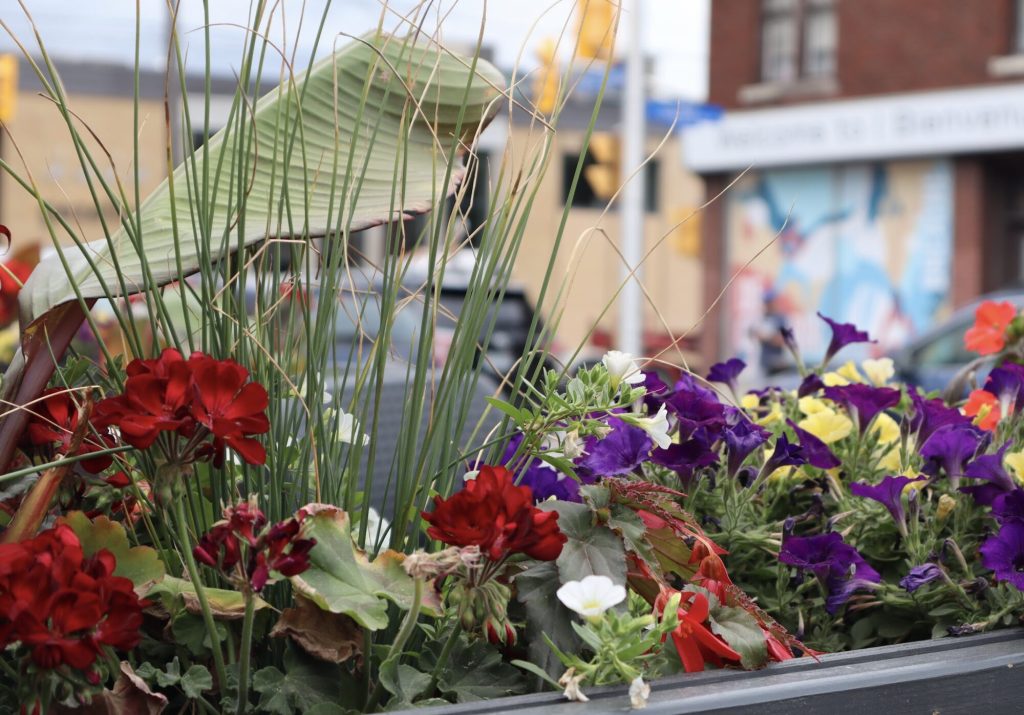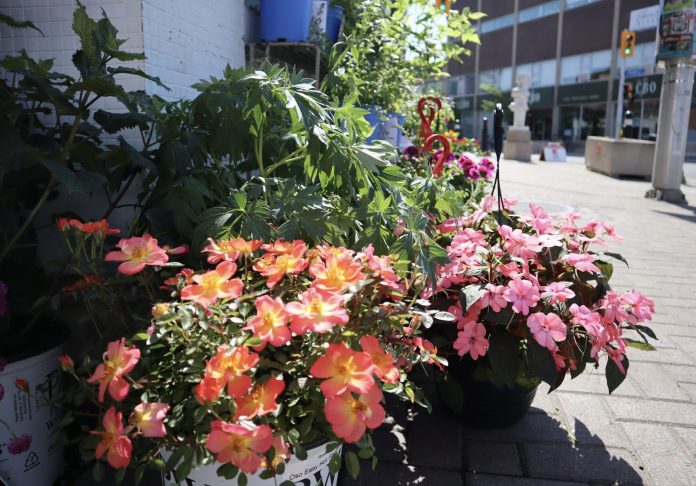While our gardens will never parade down a fashion show runway, like clothing, they do have trends. Here are seven for this year’s growing season.
Where have all the flowers gone?
“I’m seeing a lot more vibrance in plants without flowers,” says Lana Doss, a gardening expert and member of Ritchie Feed & Seed’s Green Team. Instead of just traditional bright floral displays, homeowners are gravitating toward darker red and even purple-leaved plants as well as contrasting lime green, yellow or variegated foliage, often with textured leaves. These plants, which do typically flower briefly or subtly, fare well in shady areas that many brightly flowering plants don’t like, and, when the colours are mixed, they create dramatic contrasts. Perennials like hostas and coral bells are available in an array of colours.
Related: Building a better indoor garden: Tips and trends.
Pollinators in the spotlight
It’s no secret that pollinators are being hammered by the onslaught of climate change, habitat loss and disease. Without pollinators, crops are in serious trouble and so are we. Besides, the buzz of bees and the whirr of hummingbirds hard at work is one of the great pleasures of a summer afternoon. Nectar-rich plants like coneflowers, marigolds, cosmos, columbine and lavender provide food for pollinators and add a splash of colour to your garden, balcony or deck.
Drought resistance
Ottawa typically endures a dry spell each summer. Yarrow, hostas, ornamental grasses and sedum (often used for green roofs) are growing in popularity because they require minimal water and maintenance and add elegance and colour to your property.
Summer downpours
Intense summer rainfalls seem on the upswing, bringing soil erosion, flooding and pollution of waterways as rain courses over roofs, pavement and other contaminated surfaces. Rain gardens — using plants that don’t mind a good soaking such as native grasses, black-eyed Susans and some shrubs — absorb the excess water, including pollutants. “It could be as simple as redirecting a downspout into a garden with river rocks and plants that can stay wet,” says Doss. Check the City of Ottawa’s detailed information on rainwater projects, including rain gardens, by searching online for “Rain Ready Ottawa.”

Related: Gardens unite community members despite climate change and inflation.
Going minimal
Too busy to spend all your spare time gardening? Go for minimalism, which demands less maintenance, gives your backyard a refined, contemporary look and creates a calming ambience — exactly what’s needed after a hectic day. A simple colour palette, ornamental grasses and lots of uncluttered space typically characterize minimalist gardens. If you have room, anchor the space with a single tree, one that’s not too tall and has subtle colour or texture.
Trees
As backyards have gotten smaller, so have their trees, according to Doss. She’s seen an increased demand for “urban” trees that grow no higher than 20 feet, yet offer shade and cool an outdoor space by releasing water vapour that brings down the temperature. Trees also sequester carbon dioxide, a greenhouse gas. Look for trees like hornbeam, serviceberry and pagoda dogwood, but check with a nursery or a site like ecology.ca for recommendations on planting conditions.
Grow your own
Doss says climate change is really hitting home and that’s showing up in gardening trends. “It all has an ecological component. I’ve seen more interest in using environmental methods in the past three years than in the last three decades.” That includes younger homeowners growing their own, nutritious organic food, a skill new to many of them because their parents didn’t garden. Growing herbs, vegetables and fruit is astoundingly easy once you get the hang of it, and the maintenance (weeding, for example) is a relaxing if endless task. Check with your garden centre about soil, light and other conditions when choosing seeds and plants.
Anita Murray and Patrick Langston are the co-founders of AllThingsHome.ca, Ottawa’s go-to resource for homeowners and homebuyers.
